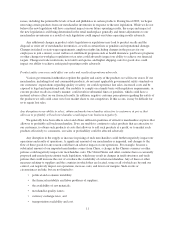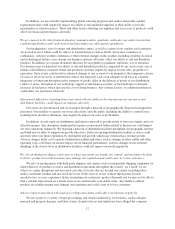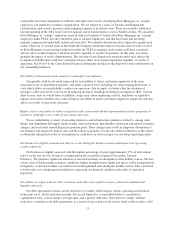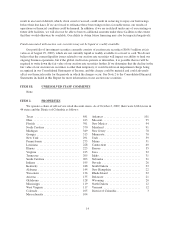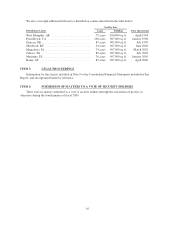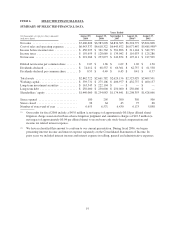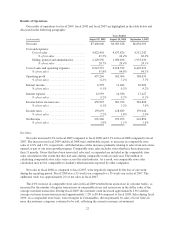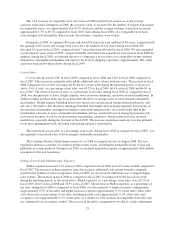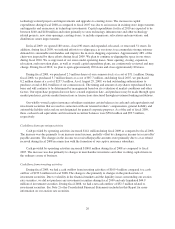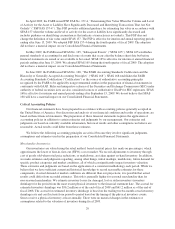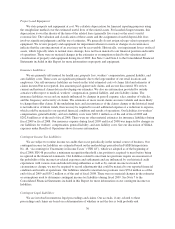Family Dollar 2009 Annual Report Download - page 29
Download and view the complete annual report
Please find page 29 of the 2009 Family Dollar annual report below. You can navigate through the pages in the report by either clicking on the pages listed below, or by using the keyword search tool below to find specific information within the annual report.• We continued the roll-out of new register and point-of-sale technology in approximately 2,500
additional stores. As of August 29, 2009, approximately 4,900 stores were operating on the new
technology platform. The new platform facilitates the acceptance of additional payment types,
including credit cards and food stamps, and includes a number of computer-based tools designed to
provide our store managers with better training, analytics and work flow management.
• Through our price management work, the continued development of our private label offering, and our
global sourcing efforts, we offset the impact of the shift in the merchandise mix to more lower-margin
consumable merchandise.
• We continued to focus on inventory productivity, and we lowered our inventory levels in more
discretionary merchandise categories. During fiscal 2009, total inventory decreased 3.8% and inventory
per store decreased 5.0%, both in comparison to fiscal 2008. Lower inventory levels are making our
stores easier to shop and reducing our exposure to seasonal markdowns. We also believe that lower
inventory levels are resulting in lower inventory shrinkage and a reduction in workers’ compensation
and general liability claims.
• Reflecting the uncertainty in the current economic environment, we continued our measured pace of
new store openings so that we can focus on improving our returns on existing assets. We opened 180
stores and closed 96 stores.
Fiscal 2010 Outlook
During fiscal 2010, we plan to build on the improvements we made during fiscal 2009 and maintain our
focus on four key priorities: increase relevancy to the customer, drive increased profitability, manage risk and
build great employee teams.
To increase our relevancy to the customer we plan to continue re-aligning the space in our stores to better
meet customer demand and improve the in-store shopping experience. In addition, we plan to complete the
rollout of our new register and point-of-sale technology during fiscal 2010. We also plan to adjust our store
operating hours to provide greater convenience for our customers and continue to expand our customer research
efforts.
In order to drive increased profitability, we plan to continue investing in initiatives that drive top-line
growth, and we remain focused on cost management. In addition to the initiatives already discussed, we plan to
enhance our private label offering and global sourcing efforts and make additional investments to strengthen our
pricing efforts.
We plan to continue managing our inventory risk by constraining purchases of discretionary merchandise.
We also plan to leverage the investments we have made in our Project Accelerate initiative and global sourcing
efforts to improve inventory productivity and quality.
We believe that our long-term success is dependent on our ability to create strong employee teams that can
adjust and respond quickly to ever-changing conditions. We plan to continue to invest in building a stronger
Family Dollar culture and great employee teams. We also plan to continue to focus on improving employee
retention.
During fiscal 2010, we expect sales will continue to be strongest in the Consumables category, as customers
continue to constrain their discretionary spending. We expect cost of sales, as a percentage of net sales, will
continue to be pressured by the shift in the merchandise mix to more consumable merchandise. We plan to offset
this pressure through lower markdowns, the enhancement of our private label program, improvements in price
optimization, and lower inventory shrinkage. We expect selling, general and administrative (“SG&A”) expenses,
as a percentage of net sales, will be pressured as we continue to make revenue driving investments, including the
re-alignment of space in our stores, the roll-out of new register and point-of-sale technology and the expansion of
store operating hours. See Part I, Item 1 of this Report for more information on our current strategic initiatives.
21


